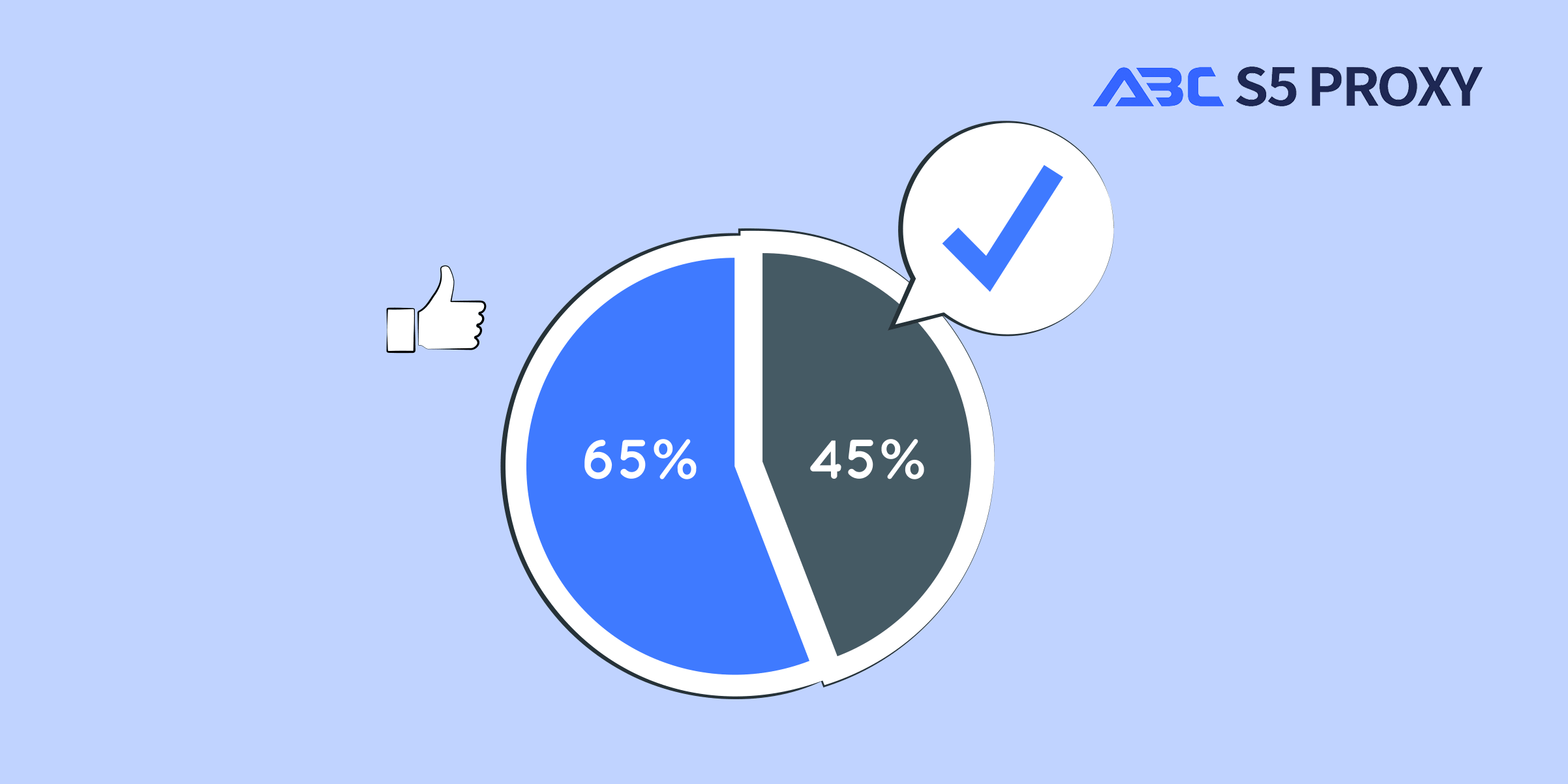Residential Proxies
Allowlisted 200M+ IPs from real ISP. Managed/obtained proxies via dashboard.

Proxies Services
Residential Proxies
Allowlisted 200M+ IPs from real ISP. Managed/obtained proxies via dashboard.
Residential (Socks5) Proxies
Over 200 million real IPs in 190+ locations,
Unlimited Residential Proxies
Unlimited use of IP and Traffic, AI Intelligent Rotating Residential Proxies
Static Residential proxies
Long-lasting dedicated proxy, non-rotating residential proxy
Dedicated Datacenter Proxies
Use stable, fast, and furious 700K+ datacenter IPs worldwide.
Mobile Proxies
Dive into a 10M+ ethically-sourced mobile lP pool with 160+ locations and 700+ ASNs.
Scrapers
Collection of public structured data from all websites
Proxies
Residential Proxies
Allowlisted 200M+ IPs from real ISP. Managed/obtained proxies via dashboard.
Starts from
$0.6/ GB
Residential (Socks5) Proxies
Over 200 million real IPs in 190+ locations,
Starts from
$0.03/ IP
Unlimited Residential Proxies
Unlimited use of IP and Traffic, AI Intelligent Rotating Residential Proxies
Starts from
$1816/ MONTH
Rotating ISP Proxies
ABCProxy's Rotating ISP Proxies guarantee long session time.
Starts from
$0.4/ GB
Static Residential proxies
Long-lasting dedicated proxy, non-rotating residential proxy
Starts from
$4.5/MONTH
Dedicated Datacenter Proxies
Use stable, fast, and furious 700K+ datacenter IPs worldwide.
Starts from
$4.5/MONTH
Mobile Proxies
Allowlisted 200M+ IPs from real ISP. Managed/obtained proxies via dashboard.
Starts from
$1.2/ GB
Scrapers
Web Unblocker
Simulate real user behavior to over-come anti-bot detection
Starts from
$1.2/GB
Serp API
Get real-time search engine data With SERP API
Starts from
$0.3/1K results
Scraping Browser
Scale scraping browsers with built-inunblocking and hosting
Starts from
$2.5/GB
Documentation
All features, parameters, and integration details, backed by code samples in every coding language.
TOOLS
Resources
Addons
ABCProxy Extension for Chrome
Free Chrome proxy manager extension that works with any proxy provider.
ABCProxy Extension for Firefox
Free Firefox proxy manager extension that works with any proxy provider.
Proxy Manager
Manage all proxies using APM interface
Proxy Checker
Free online proxy checker analyzing health, type, and country.
Proxies
AI Developmen
Acquire large-scale multimodal web data for machine learning
Sales & E-commerce
Collect pricing data on every product acrossthe web to get and maintain a competitive advantage
Threat Intelligence
Get real-time data and access multiple geo-locations around the world.
Copyright Infringement Monitoring
Find and gather all the evidence to stop copyright infringements.
Social Media for Marketing
Dominate your industry space on social media with smarter campaigns, anticipate the next big trends
Travel Fare Aggregation
Get real-time data and access multiple geo-locations around the world.
By Use Case
English
繁體中文
Русский
Indonesia
Português
Español
بالعربية

Static vs Dynamic Content for Web Scraping
In the world of web scraping, one key decision that developers often face is whether to target static or dynamic content. Understanding the difference between the two can help you make informed choices when building web scraping tools. In this blog post, we will explore the nuances of static and dynamic content, their implications for web scraping, and provide insights into when to use each type.
Static content refers to web pages whose content remains constant without changes unless manually edited. This type of content is typically stored as HTML files on servers and does not require any client-side processing. Static websites are easier to scrape as the data is readily available in the page source, making it simpler to extract information using web scraping tools.
When scraping static content, developers can rely on traditional web scraping methods like parsing HTML using libraries such as BeautifulSoup or Scrapy. These tools can easily navigate through the HTML structure and extract desired data such as text, images, or links. Static content is ideal for scenarios where the information does not update frequently, making it a reliable and stable data source for web scraping projects.
Dynamic content, on the other hand, refers to web pages that generate content dynamically in response to user actions or database queries. This type of content often relies on JavaScript to render data on the client-side, making it more challenging to scrape compared to static content. Examples of dynamic content include social media feeds, real-time stock prices, or interactive maps.
Scraping dynamic content requires advanced techniques such as headless browsers or APIs to interact with the page and extract the desired data. Tools like Selenium or Puppeteer can simulate user interactions to access dynamically generated content, making it possible to scrape data from complex websites. While scraping dynamic content may be more complex, it also presents unique opportunities to gather real-time information not available in static sources.
When deciding between static and dynamic content for web scraping, it is essential to consider the specific requirements of your project. If you are targeting a website with mostly static information that rarely changes, opting for static content scraping may be the most efficient approach. On the other hand, if you need real-time data or are dealing with dynamic web pages, investing in tools that can handle dynamic content scraping is crucial for success.
In some cases, a hybrid approach that combines both static and dynamic scraping methods may be necessary to gather comprehensive data from a website. By leveraging the strengths of each approach, developers can overcome challenges posed by different types of content and extract valuable insights for their projects.
In conclusion, understanding the distinction between static and dynamic content is essential for effective web scraping. While static content provides a stable and reliable data source, dynamic content offers real-time information and interactive features. By choosing the right approach based on the nature of the website and project requirements, developers can optimize their web scraping efforts and extract valuable data efficiently.
Whether scraping static or dynamic content, having a clear strategy and the right tools will ultimately determine the success of your web scraping project. By staying informed about the latest trends and techniques in web scraping, developers can navigate the complexities of different content types and unlock the full potential of web data extraction.
Featured Posts
Popular Products
Residential Proxies
Allowlisted 200M+ IPs from real ISP. Managed/obtained proxies via dashboard.
Residential (Socks5) Proxies
Over 200 million real IPs in 190+ locations,
Unlimited Residential Proxies
Use stable, fast, and furious 700K+ datacenter IPs worldwide.
Rotating ISP Proxies
ABCProxy's Rotating ISP Proxies guarantee long session time.
Residential (Socks5) Proxies
Long-lasting dedicated proxy, non-rotating residential proxy
Dedicated Datacenter Proxies
Use stable, fast, and furious 700K+ datacenter IPs worldwide.
Web Unblocker
View content as a real user with the help of ABC proxy's dynamic fingerprinting technology.
Related articles

Boost Your News Experience with ABCproxy's Google News Integration: Unleashing Next-Level API Power
Looking for the latest news trends? ABCproxy's Google News API delivers real-time updates effortlessly. Stay informed and get ahead with this powerful tool.

Unveiling the Power of Screen Scraping: Everything You Need to Know
Looking to learn about Screen Scraping? This blog post breaks down the concept of Screen Scraping and explains how it can benefit your business. Explore the ins and outs of this data extraction technique!